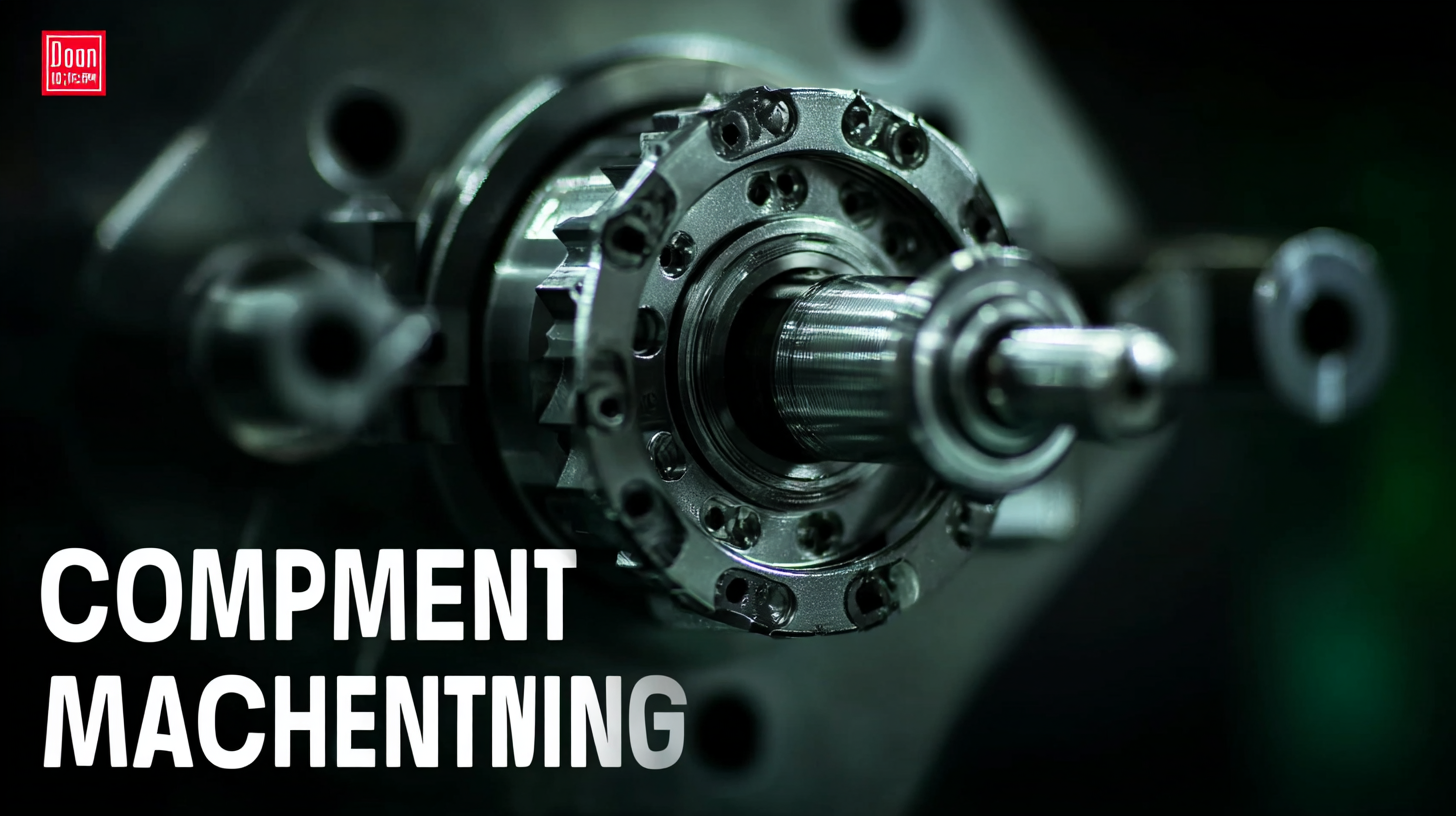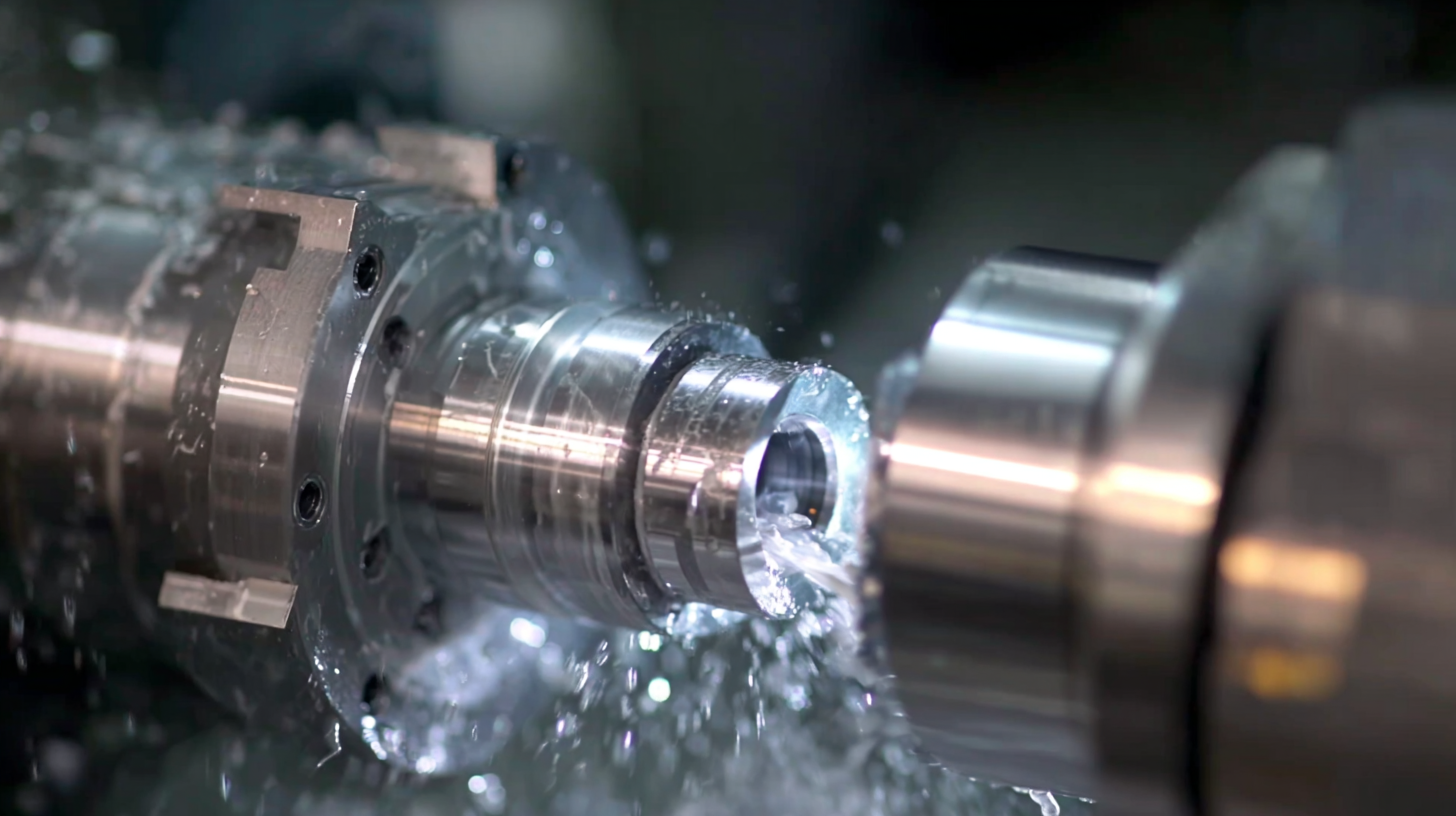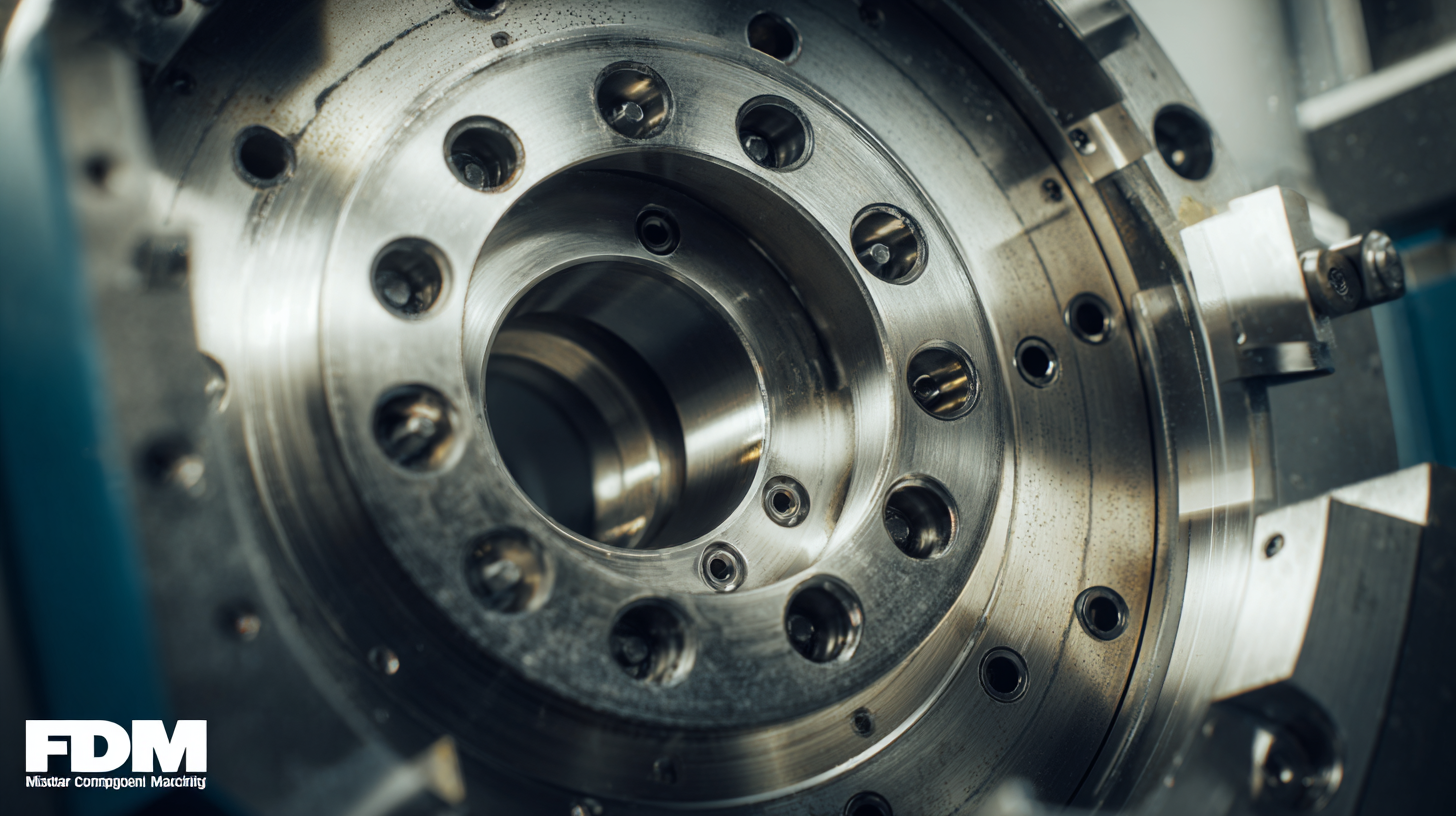In the ever-evolving landscape of modern manufacturing, the significance of precise component machining cannot be overstated. According to a report by MarketsandMarkets, the global advanced manufacturing technologies market is expected to reach $423 billion by 2026, underscoring the escalating demand for precision in production processes. Component machining plays a pivotal role in this paradigm, as it directly impacts product quality, operational efficiency, and overall production costs.

The trend toward miniaturization and increased complexity in components necessitates advanced machining techniques that ensure accuracy and reliability. As industries such as aerospace, automotive, and electronics push for higher performance standards, the necessity for best practices in component machining becomes critical to stay competitive in a market that values precision engineering and innovation.
In modern manufacturing, precision plays a pivotal role in component machining, serving as the backbone of product quality and performance. The intricate process of machining components demands not only skillful craftsmanship but also the utilization of advanced technologies and methodologies. High-precision machining ensures that each component adheres to stringent tolerances, leading to enhanced operational reliability in various applications, from automotive to aerospace. When components are manufactured with utmost accuracy, the end products exhibit improved fit and functionality, reducing the risk of errors that could arise from poorly machined parts.
Moreover, the significance of precision in component machining extends beyond production efficiency; it directly correlates with customer satisfaction and brand reputation. In a highly competitive market, manufacturers are increasingly held accountable for the quality of their products. Investing in precision machining techniques not only minimizes waste and costs associated with rework but also fosters innovation by allowing the creation of complex geometries that meet specific design requirements. As industries evolve, the demand for precise components will persist, reaffirming that best component machining is not just a process but a vital element in achieving superior product quality.
Modern component machining processes are vital to the efficiency and precision of contemporary manufacturing workflows. Techniques such as Computer Numerical Control (CNC) machining, additive manufacturing, and multi-axis milling have elevated the standards of component fabrication. According to a report by Market Research Future, the global CNC machine market is projected to reach USD 100 billion by 2025, driven by the growing demand for automation and precision in production.
One key technique, CNC machining, allows for the production of intricate components with minimal human intervention. Utilizing advanced software, CNC machines can produce parts with tolerances as tight as ±0.005 inches, which is essential in industries such as aerospace and electronics where precision is non-negotiable. Additionally, additive manufacturing has introduced the ability to create complex geometries that were previously unachievable through traditional methods. A study by Wohlers Associates highlights that the additive manufacturing sector is expected to grow to a valuation of USD 70 billion by 2028, showcasing its expanding role in modern machining.
Furthermore, advancements in tooling technology have enhanced the performance and longevity of cutting tools, leading to improved efficiency. The use of high-speed steel and carbide materials can reduce production time by up to 20%, as reported by the American Machinist. These essential techniques not only ensure high-quality outputs but also contribute significantly to the sustainability and profitability of manufacturing operations.
The landscape of component machining has drastically evolved with the advent of advanced technologies, significantly enhancing machining efficiency. According to a report by IBISWorld, the global machining market is projected to grow by 4.5% annually, driven largely by the integration of cutting-edge technologies such as computer numerical control (CNC) and automation. These technologies not only streamline operations but also minimize human error, leading to more precise and consistent outcomes.

Moreover, technologies like additive manufacturing and advanced simulation software are reshaping the machining process. A study by McKinsey & Company reveals that companies leveraging these technologies can increase their production efficiency by up to 30%. This boost is crucial as manufacturers face the pressures of rising material costs and tighter production timelines. By investing in advanced machining technologies, companies can ensure they remain competitive while meeting the high demand for quality components in sectors ranging from aerospace to automotive.
In modern manufacturing, component machining faces several prevalent challenges that can hinder efficiency and precision. One significant issue is the complexity involved in machining thin-wall components. These parts, while essential for lightweight applications, often suffer from deformation during processing, making accuracy difficult to maintain. Maintaining the integrity of the material while achieving the desired specifications demands advanced techniques and careful monitoring throughout the machining process.

Another key challenge is the effective separation of additive manufacturing parts from build plates. This task can often be underestimated, leading to damage or loss of precision in the final product. Innovative solutions addressing this issue have been developed, focusing on specific removal techniques that minimize stress on the components. By utilizing such advancements, manufacturers can significantly enhance their overall machining capabilities.
Furthermore, the transition from traditional methods to digital solutions presents its own set of hurdles. Many machine shops are grappling with data management issues, a retiring workforce, and the maintenance of existing equipment. Embracing digital technologies can facilitate smoother operations, allowing companies to overcome inefficiencies and streamline processes, ultimately fostering a more competitive environment in the manufacturing sector.
The future of component machining is increasingly intertwined with sustainable manufacturing practices, reflecting a significant shift in the industry as manufacturers seek to minimize their environmental footprint. As markets evolve, particularly the ion implantation and CNC machining sectors, there's a growing emphasis on efficient resource utilization and waste reduction. Innovations in machining technology not only enhance precision and performance but also promote the adoption of eco-friendly materials and processes.
With the projected growth of the global market for component machining technologies, particularly through advancements in automation and smart manufacturing, companies are integrating sustainability into their core strategies. This alignment not only meets the rising consumer demand for greener solutions but also positions manufacturers to comply with stricter regulations and reduce operational costs. As component machining continues to evolve, the focus on sustainable practices will likely pave the way for developing systems that prioritize both economic viability and environmental stewardship.
This bar chart illustrates the importance scores of various factors in component machining. Precision and sustainability are regarded as the most significant, followed closely by cost efficiency, material utilization, and lead time. This highlights the trend towards sustainable practices in modern manufacturing.
Contact
KYOCERA SGS Precision Tools, Inc.
(330) 686-5700
150 Marc Drive
Cuyahoga Falls, OH 44223
Products
Resources